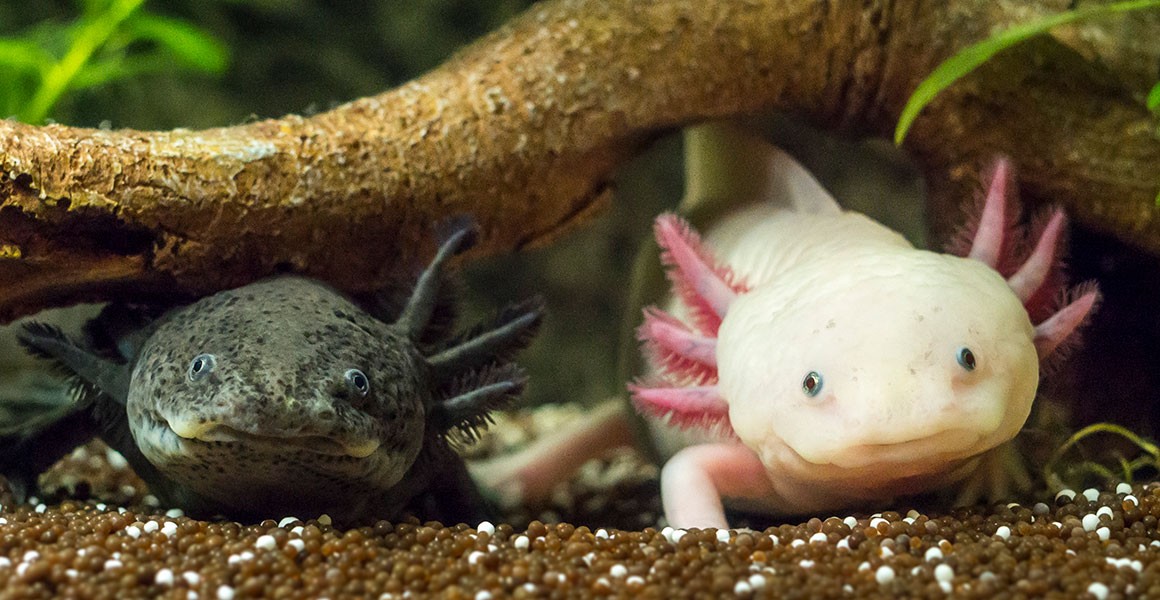
Axolotls as Pets: What You Need to Know
Known as “Mexican walking fish,” axolotls are striking creatures that are popular pets among aquatic enthusiasts. Although axolotls aren’t fish, they will be familiar to anyone who’s seen a salamander; they are amphibian salamanders and have unique traits and a cute appearance. Axolotls can make great pets, but they require special care. This complete guide to axolotl care covers tank setup, diet, handling, and everything in between. So whether you are an experienced aquarist or just beginning, this guide is to help you provide the best care for these wonderful pets.
Why Axolotls Make Fascinating Pets

Axolotls stand out as pets. They can regenerate limbs, live in water all their lives, and come in many colours. Unlike most amphibians, axolotls keep their larval features, a trait called neoteny. This means they breathe through gills and look like tadpoles. This charming trait, along with their lower maintenance needs compared to other exotic pets, makes them attractive to many owners.
The Appeal of Axolotls
One main draw of axolotls is their exotic looks. They come in various colours, such as wild-type, leucistic (white with pink gills), albino, golden albino, and melanoid. This variety lets owners pick a pet that suits their style. Axolotls are also calm and can live up to 15 years with proper care, making them long-term companions.
Key Benefits of Owning an Axolotl
Owning an axolotl can be rewarding for several reasons. First, they are low-maintenance compared to other exotic pets like reptiles or birds. They don’t need much handling or interaction, making them great for busy people or those who prefer to observe. Second, axolotls are educational pets, offering a chance to learn about amphibians, regeneration, and aquatic ecosystems. Lastly, watching them swim can relieve stress and create a peaceful home atmosphere.
How to Raise Axolotls: A Comprehensive Care Guide

Raising axolotls means understanding their needs and providing a suitable environment. This section covers essential axolotl care, including tank setup, diet, and health monitoring.
Best Tank Setup for Axolotls
Setting up the right tank is vital for your axolotl’s well-being. Here’s how to create the perfect environment:
Tank Size and Type
Axolotls need a spacious tank. A minimum 20-gallon tank is ideal for one axolotl, adding 10 gallons for each extra axolotl. They are solitary and can get stressed in crowded tanks, so space is key. A long, shallow tank is better than a tall one since axolotls stay at the bottom.
Water Quality and Temperature
Good water quality is crucial for axolotl health. Use dechlorinated water and keep it between 16-18°C (60-64°F). High temperatures can stress axolotls. A good filtration system keeps the water clean but avoids strong currents, as they prefer calm waters. Change about 20% of the water weekly to keep conditions optimal.
Substrate and Decorations
Choosing the right substrate helps prevent health issues. Fine sand or a bare-bottom tank is best, as gravel can be ingested and cause blockages. For decorations, use smooth, non-toxic items. Hiding spots like caves or PVC pipes are also essential since axolotls are places to hide.
Diet and Feeding
Axolotls are carnivores that need a protein-rich diet. They can eat live food like earthworms, bloodworms, and brine shrimp, as well as specialised axolotl pellets. Avoid overfeeding, as obesity can lead to health problems. Typically, feed your axolotl two to three times a week, depending on size and age. Younger axolotls may need more frequent feedings.
Health Monitoring and Common Issues
Regular health checks are vital for your axolotl’s well-being. Healthy axolotls have clear eyes, smooth skin, and a good appetite. Common health problems include fungal infections, which clean water can prevent, and injuries from sharp objects in the tank. If you see signs of illness like lethargy or changes in skin, consult a vet familiar with amphibians.
Additional Expert Tips & Common Mistakes to Avoid
Though axolotls are easy to care for, new owners should avoid common mistakes:
Avoiding Overhandling
Axolotls have delicate skin that can get damaged from too much handling. Limit handling to tank maintenance, and enjoy watching them instead.
Understanding Their Behaviour
Axolotls are mostly nocturnal and might be less active during the day. A consistent light-dark cycle can help regulate their activity and give them rest periods.
Monitoring Water Parameters
Get a good water testing kit to check ammonia, nitrite, and nitrate levels regularly. Keeping these within safe ranges is crucial for your axolotl’s health.
Advanced Insights and Expert Recommendations
For those wanting to deepen their knowledge of axolotl care, consider these advanced insights:
Breeding Axolotls
Breeding axolotls can be rewarding but challenging. It needs careful attention to water conditions and temperature, plus a separate breeding tank for safety. Understanding breeding behaviour is key to success.
Understanding Regeneration
Axolotls can regenerate lost limbs and parts of their spinal cord. This amazing ability is a focus of scientific research and shows their remarkable capabilities. Observing this process can provide insights into regenerative biology.
The Wonders of Amphibian Life: Axolotls

Axolotls Make Great Pets That Emphasize the Wonders of Amphibian Life. With their captivating appearances and interesting biology, they can enhance any household. This axolotl care guide will help you keep your new pet healthy and happy. Keep in mind they require a comprehension of what you are doing and a mimicry of their natural habitat.
Do you want to start raising an axolotl? We would love to hear your comments and experience, and lets learn and progress together in the fascinating world of aquaristics.


